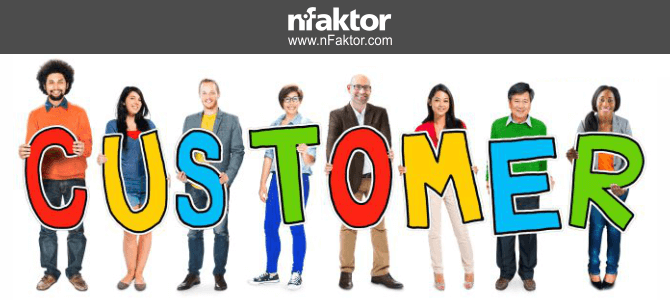In today’s ruthless world of business, brands are faced with challenges aplenty. The most significant of which – an ultimatum of sorts – is encountered when a brand is a knee deep in business stagnation. The question of whether to grow or go has visited the minds of CEOs the world over. However, it’s very unlikely to encounter a decision maker who chooses to go instead of growing. A decision well worth every applause, but is it deserving of a standing ovation? Certainly not, until the brand has harnessed the potential to grow, filled its sails with desire and ambition, and most importantly traded its dinghy for a galleon.
Customer acquisition is one of the most important drivers of business growth. A larger customer base equates to increased profits, which in turn acts as the seed for business expansion. But, how do we gain the attention of potential customers and convert them into loyal brand followers? Digital transformation has ushered a barrage of changes, a lot of which have had a detrimental impact on traditional marketing approaches. With the influx of several low-cost channels to reach out to customers, the need for expensive advertising is on the decline.
This trend has also overturned the ideology of hard selling and replaced it with more intuitive inbound approaches, which focus on exceptional customer service. ‘Value’ has never been more appreciated, by consumers and businesses alike. Present day consumers are always on the lookout for brands that offer more than just an array of exceptional products. Businesses, on the other hand, are equally appreciative of value, as it is an inexpensive way to get noticed by potential buyers.
One such unique value addition is found in link management platforms. These platforms allow for the personalization and analysis of marketing links. The rocketing use of personalized links, by world-renowned brands, to reach out to their target audience has caught the eye of many a customer. Branded links stand out for their novelty, making them click-worthy. It also works well for smart marketers who can now use links to promote their brand message.
Mountain Standard, an outdoor gear brand, has fully espoused the trend of digital marketing, so much so that they do not own a physical store to sell their products. Most of their sales take place through their online channels, while few customers buy from non-traditional pop-up stores in the U.S. The brand uses the contemporary strategy of smart content and incredible service, which have become cornerstones to the brand’s success. Their vision is simply brilliant! It reads -Premium goods at an honest price = More money for your adventures.
How does Mountain Standard sell premium goods at affordable prices and still manage to churn out a handsome profit? The theory is simple. They save a significant sum of cash in overhead costs by boycotting traditional retail stores that charge an exorbitant price just to place a product on their shelves. That’s all there is to it. But, practically, to sell goods without a chain of stores is much harder than it seems. The company makes this possible through their impressive website, which showcases every available product. A crossed out standard industry cost of the product is displayed next to the product, and the Mountain Standard cost – 40% to 50% lower – is placed next to it. A discount as such is sure to incite sales. The brand also conducts annual surveys to understand the changing requirement of their online consumers. In doing so, their website is always customized for better customer experience. It is said that in today’s digital world your website is the front of your brand, as opposed to office space, not so long ago. Mountain Standard has certainly brought this statement to life!
Not all brands can be as astute in their endeavor to garner customers. Some brands adopt a more direct approach to marketing. Very often direct marketing and hard selling are used interchangeably. However, hard selling is no more a marketing technique. In fact, it is a sure way to drive customers to your competitors. Here are five ways to draw customers to your brand:
Social influencers continue to grow in importance:
Social influencers have gained significant momentum over the past couple of years. Though it may seem like this trend is bound to decline sooner rather than later, brands continue to employ influencers in different capacities. Innovative ways to reach out to customers coupled with the trust they have in influencers has worked wonders for brands.
Traditional approaches such as guest blogging are one sure way to attract attention. Social media networks create a buzz whenever an influencer has an opinion. In due time the message reaches relevant audiences and brands benefit from the seed which is sown in the minds of potential customers through influencers.
More recently smaller organizations have started using bigger brands for promotion. It is known as the ‘host-beneficiary’ arrangement. In this case, an established brand promotes a product in their email to regular customers. This offers a chance to market to a new database of like-minded customers. In exchange, the smaller business may pay for the cost of emailing or offer commission on sales.
Press for press coverage:
The press will never become obsolete. It has withstood the test of time and is still considered to be one of the most powerful forms of media. A press release will do your brand a world of good. Not only will it ensure a good deal of readership, but it will incite trust, as it is coming from a recognized source. This is sure to be an expensive affair and should be undertaken after careful consideration.
Content marketing is at its peak:
Ask google what is the single most influential marketing tactic, and the answer is sure to be smart content! Content can make or break a brand. Right from SEO to social posts, content is the game changer! An expert content anchor can run a marketing campaign into a pot of gold. Great content without direction is a wasted effort. It is futile to have good content without a content strategy. Content creation and distribution go hand in hand. When you hit the right balance, you will see marketing miracles unfold before your very eyes.
If customer is king, customer feedback is the signet ring:
Brands have spent millions on customer surveys and test groups to analyze and improve upon existing products and services. The budget is set to increase in the days to come with the onset of personalized marketing. Without such feedback, it is impossible to create personalized products, service or marketing campaigns to sell the former. Brands with the best personalization strategies will make it big in 2018.
Focus on improving brand loyalty:
Brand loyal customers are hard to attain. Especially with the many choices in today’s market, one mistake is all it takes to lose a good chunk of loyal brand customers. However, these customers are sure to bring in a horde of new customers if their needs are met with value-added services.
2018 is certain to change the landscape of marketing. As marketers, we live in exciting times, when competition is driving mind-blowing innovation. I, for one, cannot wait to see what the latter half of 2018 has in store for us.
Disclaimer: This blog was originally published in website: Customer Think


